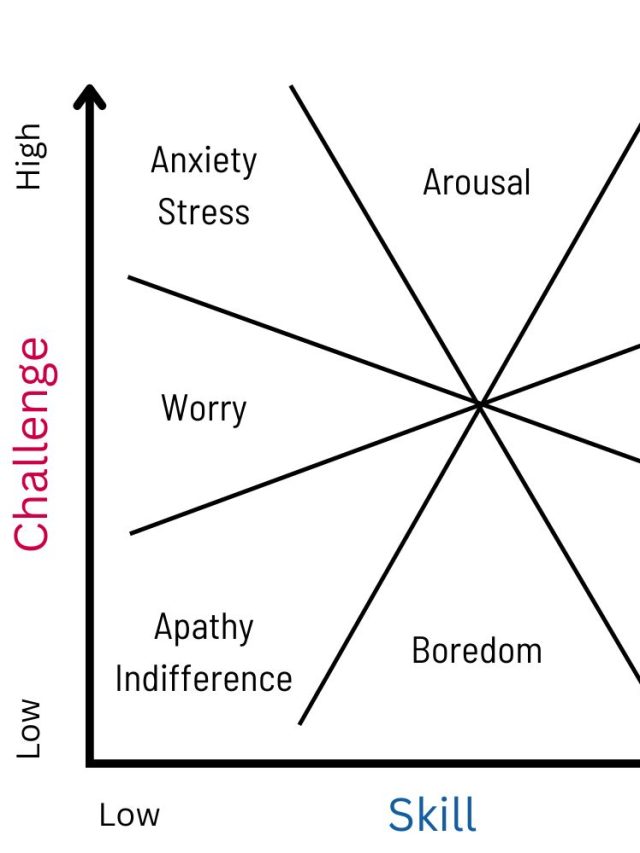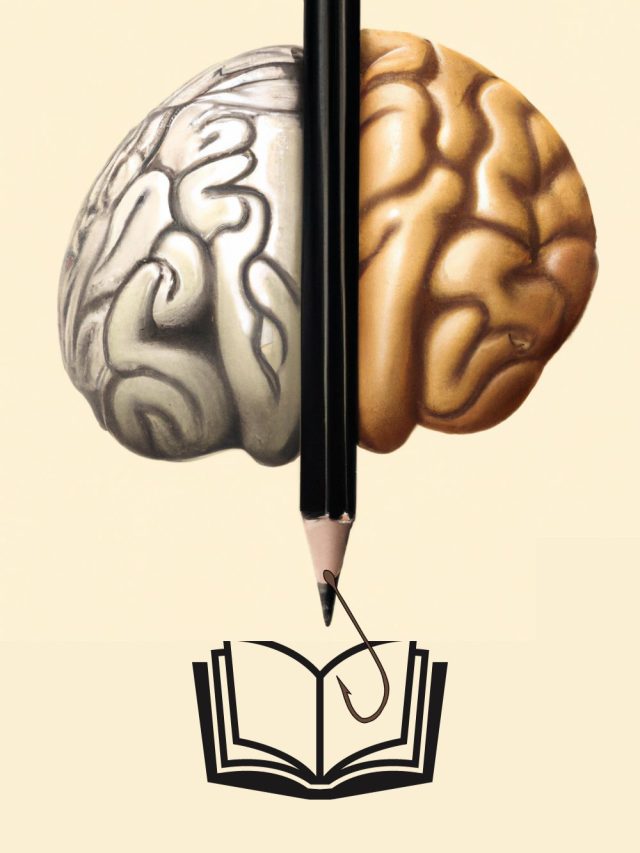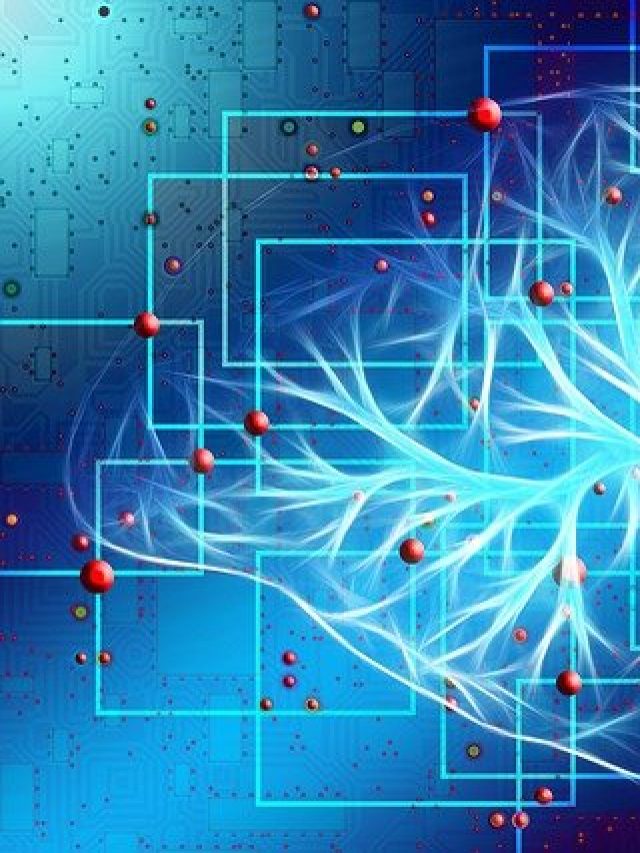The number one assumed threat to focusing at work is distractions. But getting rid of distractions isn’t enough for focusing. Some people can concentrate without distractions, but some need them. And this changes with each task. First, we need to look at how our attention system works. And second, how contexts occupy, distract, or restore that attention.
Highlights
- Your workload defines how much attention there is to stay on task or feel distracted. If the workload is low, keep distractions. If the workload is high, get rid of them.
- Common reasons why concentration drops are: Mind-wandering, habituation and monotony, attention-seeking distractions, and exhaustion.
- A low workload can leave you unstimulated and prone to distractions, so multitasking and music help by occupying surplus attention. A moderately challenging workload can put you in the flow state.
- A high workload can tire you, so restorative breaks are needed to reboot your attention. Distractions during a high workload are usually bad.
How our attention works
We have two types[1] of attention – endogenous & exogenous.
- Endogenous attention is goal-driven, deliberate, and can convert into concentration. When you plan to study a graph, you mostly employ endogenous attention. This enables purposeful and effortful behavior toward a specific goal.
- Exogenous attention is stimuli-driven (whatever attracts you), automatic, and can convert into both – concentration (if it is relevant to you) or distraction (if it is unrelated to your task). When you lose focus because of a notification on your phone and start scrolling through Instagram, you are distracted via exogenous attention. This evolved to pay attention to unexpected stimuli like changes, threats, or danger signals.
Both types are needed to serve the original purpose of attention: To orient our bodies toward something and use memory to deal with the world (endogenous), stay alert for unexpected changes (exogenous), and choose a small set of important stimuli from the environment (both).
Distraction is a feature, not a bug. Share on XConcentration is sustained attention. High-concentration work sessions are possible when we limit exogenous attention and maximize endogenous attention. When overall attention isn’t occupied, exogenous attention has the opportunity to break your focus by latching on to distractions. Distractions from within the tasks (noticing some important bit of information) also use exogenous attention, but those distractions are usually relevant.

The constant stream of information from our phones (which also leads to phone addiction), short-form content, instant gratification mindset, hyper-connectivity, and the expectation that one must respond immediately create ample opportunity to engage deliberate attention and distracted attention regardless of the task at hand.
We also have executive functions that perform the most basic operations to select or ignore information to guide concentration. These functions are cognitive inhibition (ignoring irrelevant information and staying focused on a task), inhibitory control (stopping the impulse to procrastinate & ignoring distractions), cognitive flexibility (automatic & deliberate shifting of attention between different important tasks), and self-regulation (managing your behavior, thoughts, and emotions). Together, these executive functions define our concentration level. If you are working on a presentation, self-regulation would get you to start and overcome the feeling of annoyance at your boss. Cognitive inhibition will make you ignore ads while browsing and other to-do items which are lower on priority at that moment. Cognitive flexibility will let you manage information from multiple sources to put into the slides as one cohesive unit.
Our attention can be a broad global scope or a narrow local scope, which is commonly called “focus.” Imagine your attention is like a light beam from a lighthouse constantly monitoring the port and roads. If the light beam makes a large area visible, it’s a broad scope. If it brightens up only a small patch of the road, it is narrow scope. Attentional scope tells us how much information there is to focus on. Narrow and broad attentional scope works similarly to a camera zooming in. A highly zoomed-in picture can reveal details if the resolution is high. But a zoomed-out picture can cover more elements in a photo without the high resolution.
Focusing on the X is local attention; focusing on the H arrangement is global attention. Both are needed for good concentration.
It's better to think of attention as a task-dependent process rather than a duration like seconds or hours. Share on XTop barriers preventing high concentration
The most common threats to that perfect focus are mind-wandering random thoughts (called spontaneous cognitions), getting too used to doing something (habituation), exogenous attention (our default tendency to get distracted), and being tired (exhaustion).
- Spontaneous cognitions: These are random thoughts that pop into the mind. Some of them are to-do items like picking up groceries for the weekend, some are self-referential negative thoughts like “why am I doing this,” and a few are creative solutions to problems you are working on. These spontaneous cognitions reduce when a task gets difficult, interesting, or engaging. And if that’s not possible, occupying our attention with distractions or background music/chatter can block them. Note-taking can help too.
- Habituation/Monotony: Habituation occurs when you are doing a particular task for too long and work in autopilot mode, like tuning out. When habituated, we exhibit many concentration problems – we spot fewer errors, we miss big changes, and we default to certain tendencies. Inattentional blindness is a prime example – when we are used to doing something and expecting something, even the wildest changes slip our minds. For example, you may miss that a certain store has shut down on your daily commute and not realize it till someone points it out.
- Exogenous attention: Attention-seeking signals in the environment capture our exogenous attention (automatic distraction). They are notifications, problems coming from an inefficient workflow, and interruptions from others. The cocktail party effect demonstrates one case of how easily we are interrupted – we instantly notice when we hear our name in a crowd. We are essentially tuned to respond to certain interruptions – usually those that indicate danger or are personally significant.
- Exhaustion: While attention is an always-on process, concentration is not. Concentration takes effort and resources which can get depleted, making us tired. Biological mechanisms like neural firing, using nutrients, molecular changes in the brain, supply of water, glucose, air, emotional states, etc., affect effort and resources.
There are other reasons like brain fog, mental health problems, or diseases that reduce focus too, but those are beyond the scope of this article.
The most common threats to that perfect focus are random thoughts that pop into the mind (called spontaneous cognitions), exogenous attention (our default tendency to get distracted), exhaustion, and getting too used to doing… Share on XCan multitasking help?
We have 1 attention at a time which can focus on elements in our working memory (the temporary storage of memory). Our working memory can hold about 4 random units[3] of information or 4 groups of information called chunks at a time. Or slightly more elements if they are in distinct compartments of our memory – the auditory compartment that holds words and sounds, the episodic compartment that pulls information from long-term memory, and the visual-spatial compartment that stores location, arrangement, and visual details. If we had 2 attentions, we could do 2 tasks using the elements in working memory. But we have 1, so the only way to multitask[4] is to either do one automatic task and one demanding task or switch between tasks rapidly and manage them in our working memory. Switching tasks or switching mental sets rapidly destroys focus and overall efficiency. When we work, we have a set of thought processes that are readily aligned with the task at hand. So if you are coding, your brain will be ready to activate knowledge structures related to coding and problem-solving. If you are making music, your brain will have ready resources to process musical ideas. This tuned-in state is called a mental set[5]. And switching mental sets rapidly can be exhausting, but also productive in some cases.
Realistically, distraction can force us to multi-task, or we can actively multi-task because we are bored and unstimulated. In a study[6] that looked at task difficulty and multi-tasking of 2 types (forced multi-tasking and voluntary multi-tasking) during a computer-based job, researchers saw that those who were doing a difficult task performed better when they didn’t multi-task or chose their own multi-tasking pace and worse when forced to multitask through interruptions. But while doing an easy task, those who were forcefully interrupted performed better than those who didn’t multitask or had the option to multitask. This study gives an important insight into most jobs today. When the task is difficult, it’s better to avoid multitasking. But when the task is easy, it is better to multitask or get distracted or interrupted by others or notifications.
Contrary to popular belief[7], short distractions, switching tasks, and paying attention to a small variety of information is good to stay focused for a long time. When we choose just one type of task and monotonously focus on it for a while, we get habituated (unresponsive) and reduce attention to details (and changes). Our mind wanders and then gets prone to distractions. To counter this habituation, sporadically attend to something else for a short duration. These breaks refresh our executive functioning to perform at its peak.
Multi-tasking between non-competing tasks[8] is probably ok but still has a “switching” cost. For example, simultaneously doing monetary calculations for 2 or more clients is a clear opportunity for confusion and human error. However, calculations mixed with building a song playlist might be ok. Although 2 unrelated tasks are less likely to interfere with each other, there would be a switching cost. That is the cost of changing mental sets and “reloading” your memory with relevant information again.
Finally, skill matters. The better you are at your job, the easier and more automatic it feels. In some cases, even a difficult task might free up your attention and make you prone to distraction because you are skilled and need to think less. But if you are learning and feeling challenged, your attention is occupied, especially when the task is novel. Research shows that novel tasks tend to use attention, decision-making, and memory resources at full capacity[9] making distractions terrible for productivity, while the same resources are less occupied when one is familiar with the task.
Tip: If the workload is low, keep distractions. If the workload is high, get rid of them.
How music affects attention and concentration
Background music can occupy some portion of your attention and according to research[10], it does help people concentrate better. For some, it reduces habituation, boredom, and monotony, blocks out random thoughts, and keeps the brain engaged. Generally, music with lyrics is a bad idea because lyrics, human voices, and emotional sounds[11] capture our attention and fill up the auditory compartment of our working memory. This is why vocal music makes reading and typing sentences very difficult – there is no space and excess interference. Vocals, lead guitar, violins, etc., are predominately in the 1k to 3k Hz frequency, and the brain has evolved to pay instant attention to sounds in the 2k to 4k range because it resembles the human voice which generally peaks between 800 to 4k[12]. This is why many people can work on habitual tasks with mild electronic music which dominates at lower frequencies.
Many can increase concentration while reading and writing, even calculations, by listening to background music or noise. Background music can break habituation/monotony, shield you from other distractions, and occupy surplus attention. Others require total silence. Some can only focus for a few minutes and then require a conversational or YouTube break. Everyone’s capacity to concentrate is different because their need for stimulation & vulnerability to distraction is different.
Eliminating distractions or overstimulating your mind doesn't always improve focus, you need to manage the distractions and stimulation from the workload to occupy your attention enough. Share on XTaking breaks to restore attention
Taking breaks is important to restore attention because concentration depletes our mental resources. All sorts of breaks[13] – vacations, weekends, micro-breaks during work, and evening chill – can reduce stress, refill those resources, and improve the ability to focus better at work. Short self-initiated breaks and good sleep improve our productivity[14], but short breaks aren’t enough to compensate for poor sleep. So ideally, priority should go to sleep, and then micro-breaks. Many studies show the benefit of breaks, and quite a few workplaces are accommodating them. For example, Google has designed taking breaks as a part of their work culture[15] with nap pods, bicycle commuting, fitness facilities, playgrounds, and general artsy distractions that shift the brain’s focus away from work-related processing. Even the popular ophthalmologist’s 20/20/20 advice[16] is becoming common – Every 20 minutes of screen time, look at something 20 feet away for 20 seconds to reduce eye fatigue.
Generally, when people are fatigued, they are automatically driven to something that repairs their mood. So when attention drops during tiring work, they choose the quickest option that repairs their mood – their phone – and lose the work mindset.
Research shows that even 40 seconds[17] of staring at a green area can restore one’s attention. Generally, any engagement with nature or lifeforms can restore attention and improve focus. Watching cute things like animal videos on Instagram can also improve attention by making it more narrow and precise for detail-oriented work. So you don’t actually have to disconnect from a screen for that necessary micro-break.
A well-established theory called the “attention restoration theory[18]” says that our capacity to focus on a task reduces as we get exhausted. After exhaustion, we reach the “directed attention fatigue” state which weakens cognitive abilities (thinking, memory accuracy, etc.) and emotional management (dealing with stress). To come out of attention fatigue and restore the ability to focus, one has to immerse themselves in restorative breaks. And they should meet at least 1 of 4 conditions: Fascination, Distance, Extended engagement, and Psychological compatibility.
- Fascination is when a person is motivated to engage in something without feeling any effort (like looking at a new gadget).
- Distance is physical and psychological separation from work (like leaving the room and staring into the roads).
- Extended engagement describes breaks/environments that occupy the mind enough to keep it engaged (like a game of chess).
- Psychological compatibility is a break that aligns with one’s interests or tendencies (like something you find fun and interesting).
So for most people simply stepping away from work and engaging in a fun activity is enough to restore attention.
Typical types of breaks that improve our ability to focus:
- Simple social media distractions like memes, reels, and YouTube shorts
- Lunch and snack breaks with mundane or non-work conversations
- Short moments of gaming with coworkers or phone calls with friends
- Evening plans like dates, exercise, sports, or movies
- Weekend getaways in natural environments
- Long vacations
There are more ways to restore attention apart from sleep, vacation, fun, and rest. Exercise, hydration, and nutrition play a big role too.
Entering the flow state
When you are fully involved and the work task is slightly challenging and beyond your current skill level, you may experience the flow state which has the highest form of concentration. This is generally a moderate workload. It’s a state of deep engagement with your work with continuous feedback between your work and your brain which makes you one with the task. The flow state is known to be a highly productive focused state where distractions lose their power. You can experience the flow state by meeting 4 background conditions: being motivated without external rewards, a sense of being challenged by the task, working at your skill’s limit, and a sense of achieving something.
Sources
[2]: https://www.psytoolkit.org/experiment-library/navon.html
[3]: https://journals.sagepub.com/doi/abs/10.1177/0963721409359277
[4]: http://www.hawaii.edu/behavior/306/downloads/Multitasking%20-%20Dzubak.pdf
[5]: https://link.springer.com/chapter/10.1007/978-3-0348-8030-5_13
[6]: https://academic.oup.com/iwc/article-abstract/27/4/430/803735
[7]: https://www.sciencedirect.com/science/article/abs/pii/S0010027710002994?via%3Dihub
[8]: http://www.hawaii.edu/behavior/306/downloads/Multitasking%20-%20Dzubak.pdf
[9]: https://pubmed.ncbi.nlm.nih.gov/16242923/
[10]: https://psycnet.apa.org/record/2019-03876-001
[11]: https://journals.physiology.org/doi/full/10.1152/jn.00329.2005
[12]: https://www.dpamicrophones.com/mic-university/facts-about-speech-intelligibility
[13]: https://www.researchgate.net/profile/Caitlin-Demsky/publication/259095808_Embracing_work_breaks_Recovering_from_work_stress/links/5f85e38792851c14bcc66977/Embracing-work-breaks-Recovering-from-work-stress.pdf
[14]: https://www.tandfonline.com/doi/abs/10.1080/1359432X.2016.1269750
[15]: https://candor.co/articles/tech-careers/perks-of-working-for-google-a-playground-for-grownups
[16]: https://journals.sagepub.com/doi/full/10.1177/1120672118815110
[17]: https://www.sciencedirect.com/science/article/abs/pii/S0272494415000328
[18]: https://www.sciencedirect.com/science/article/pii/S2666957920300069

Hey! Thank you for reading; hope you enjoyed the article. I run Cognition Today to paint a holistic picture of psychology. My content here is referenced and featured in NY Times, Forbes, CNET, Entrepreneur, Lifehacker, about 15 books, academic courses, and 100s of research papers.
I’m a full-time psychology SME consultant and I work part-time with Myelin, an EdTech company. I’m also currently an overtime impostor in the AI industry. I’m attempting (mostly failing) to solve AI’s contextual awareness problem from the cognitive perspective.
I’ve studied at NIMHANS Bangalore (positive psychology), Savitribai Phule Pune University (clinical psychology), Fergusson College (BA psych), and affiliated with IIM Ahmedabad (marketing psychology).
I’m based in Pune, India. Love Sci-fi, horror media; Love rock, metal, synthwave, and K-pop music; can’t whistle; can play 2 guitars at a time.











